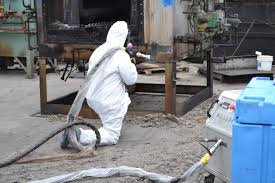Chemical peels are a common treatment that helps with skin texture as well as appearance. The chemical peel works by applying a chemical solution that exfoliates or removes the dead skin cells from the upper layers of skin, allowing for new, healthier skin to be revealed. Chemical peels can address several areas of concern, including acne, pigmentation, fine lines, and sun damage. However, not every chemical peel is the same. Different chemical peels are available for specific skin concerns and patient goals. Let’s explore the types of chemical peel treatment in Gurgaon available at different skin clinics.
Classification Based on Depth
Chemical peels are usually classified by their depth of penetration:
- Superficial (Light) Peels: Light peels only impact the skin’s outermost layer (epidermis) and are the mildest peels available. They provide mild enhancement with minimal downtime, therefore making them a suitable option for someone with mild skin concerns, including dullness, minimal pigmentation or mild acne.
- Medium Peels: Medium peels are more effective in penetrating the upper layer of the dermis, therefore making them more suitable for individuals with moderate skin concerns that include wrinkles, sun damage or uneven skin tone. If compared to light peels, recovery time is longer.
- Deep Peels: Deep peels can penetrate the mid-reticular dermis, providing significant improvement in skin quality and appearance. They are used for serious skin concerns such as deep wrinkles and scarring, and they require a longer recovery time compared to light and medium peels.
What are the Different Types of Chemical Peels?
- Alpha Hydroxy Acid (AHA) Peels: These peels contain glycolic acid and lactic acid. These are superficial peels. AHA peels exfoliate the outer layer of skin and are beneficial for improving the appearance of fine lines, mild pigmentation, and dryness. Glycollic acid, which comes from sugar cane, is especially popular for promoting radiance and a smoother skin texture.
- Beta Hydroxy Acid (BHA) Peels: Salicylic acid is the primary BHA used in chemical peels. Salicylic acid peels penetrate deeper into the skin and are regarded as effective for those with oily and acne-prone skin. BHA peels can help treat concerns such as blackheads, whiteheads, and blemishes, etc.
- Combination Peels: Some chemical peels, including Jessner’s Peels contain salicylic acid, lactic acid, and resorcinol. These peels provide benefits for multiple skin concerns and will be customised for each person.
The choice of chemical peels will depend on your skin type. To determine which type of peel would work for you, seek help from a leading dermatologist. For this, you can consult with the skin experts at Citrine Clinic, the best skin clinic in Gurgaon. The cost of chemical peel treatment varies between Rs. 5,000 and Rs. 7,000 for each session. Visit the clinic now to find out the actual pricing.



